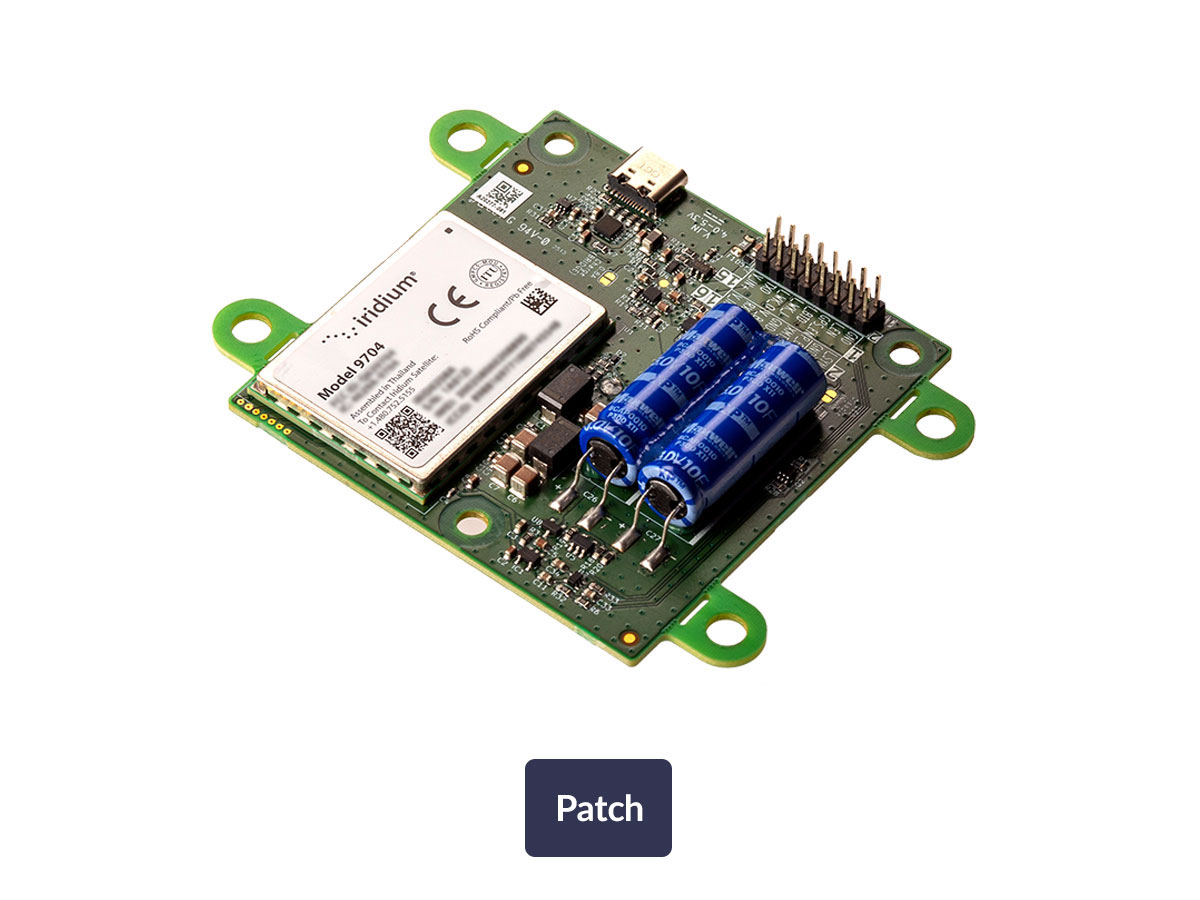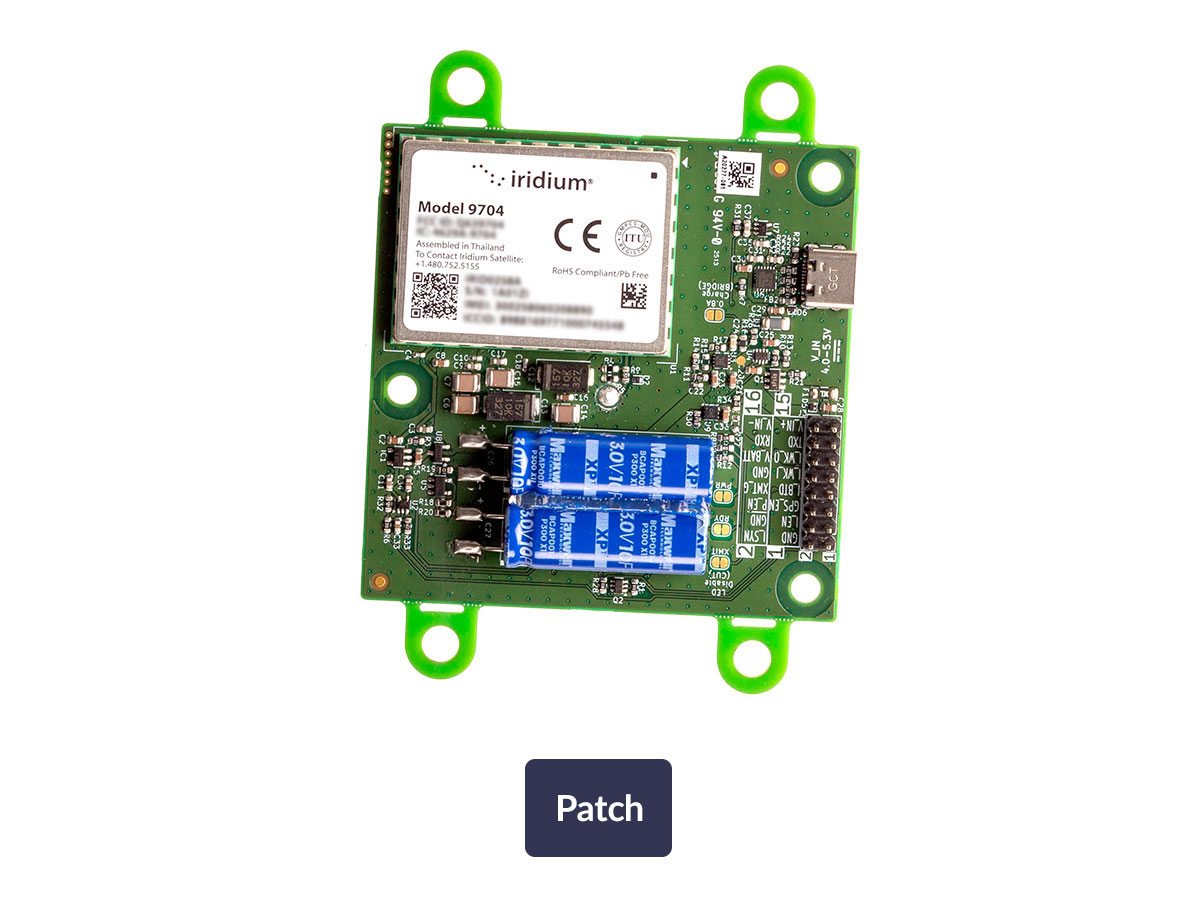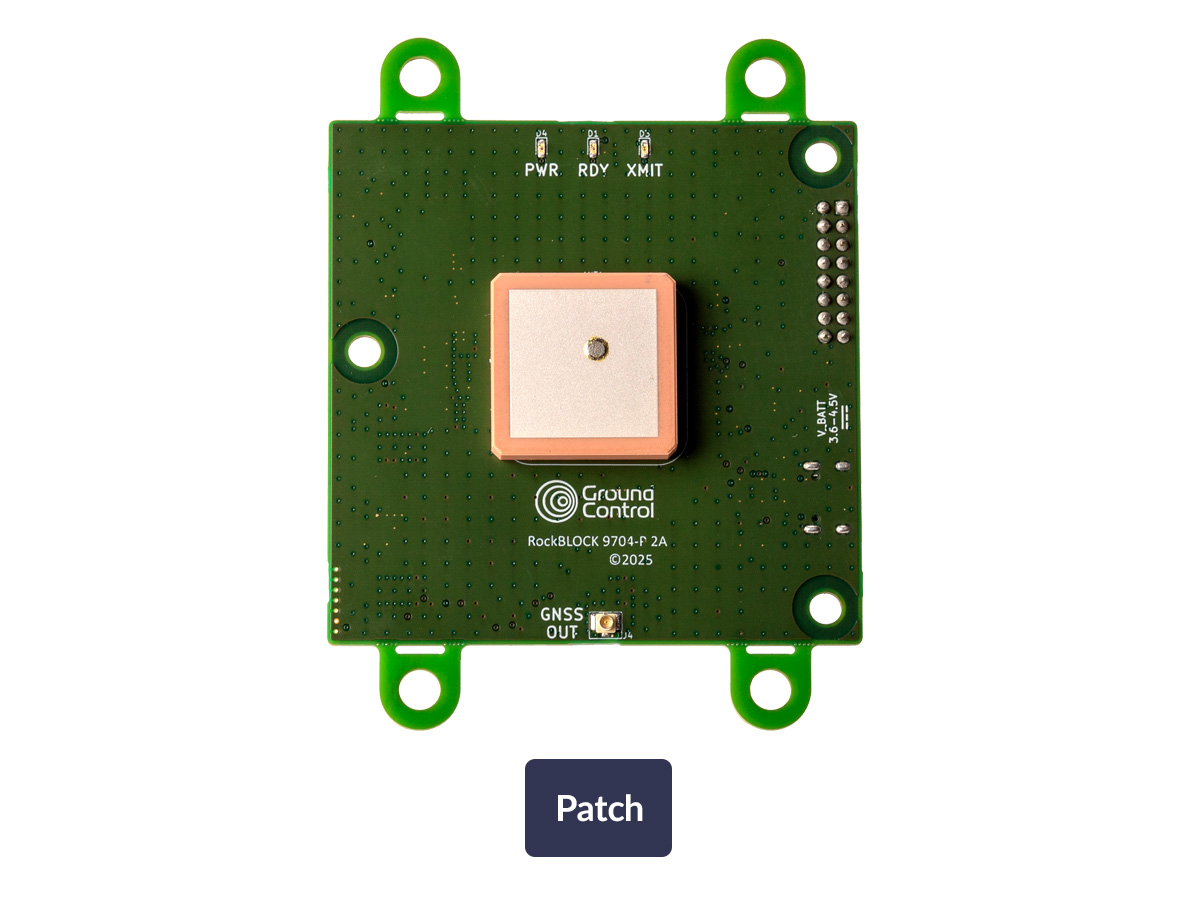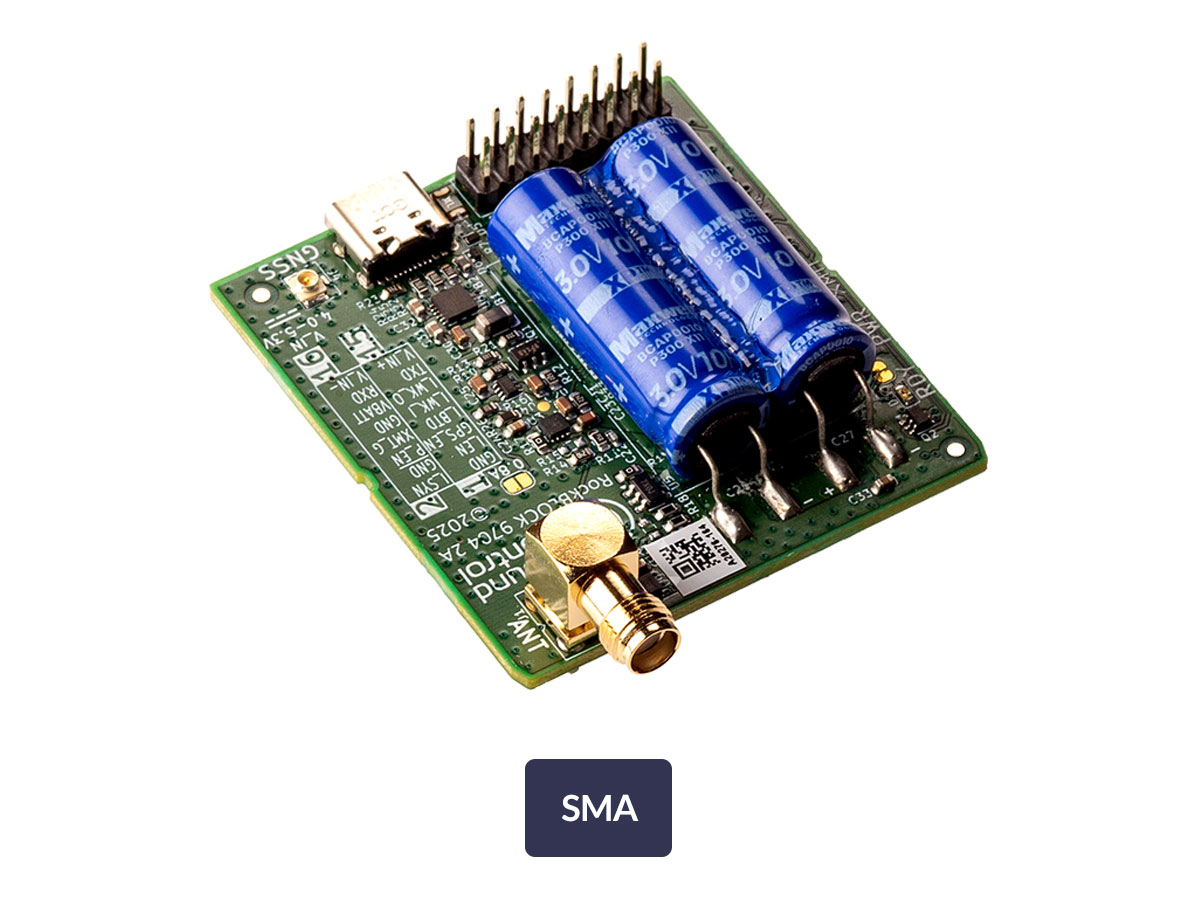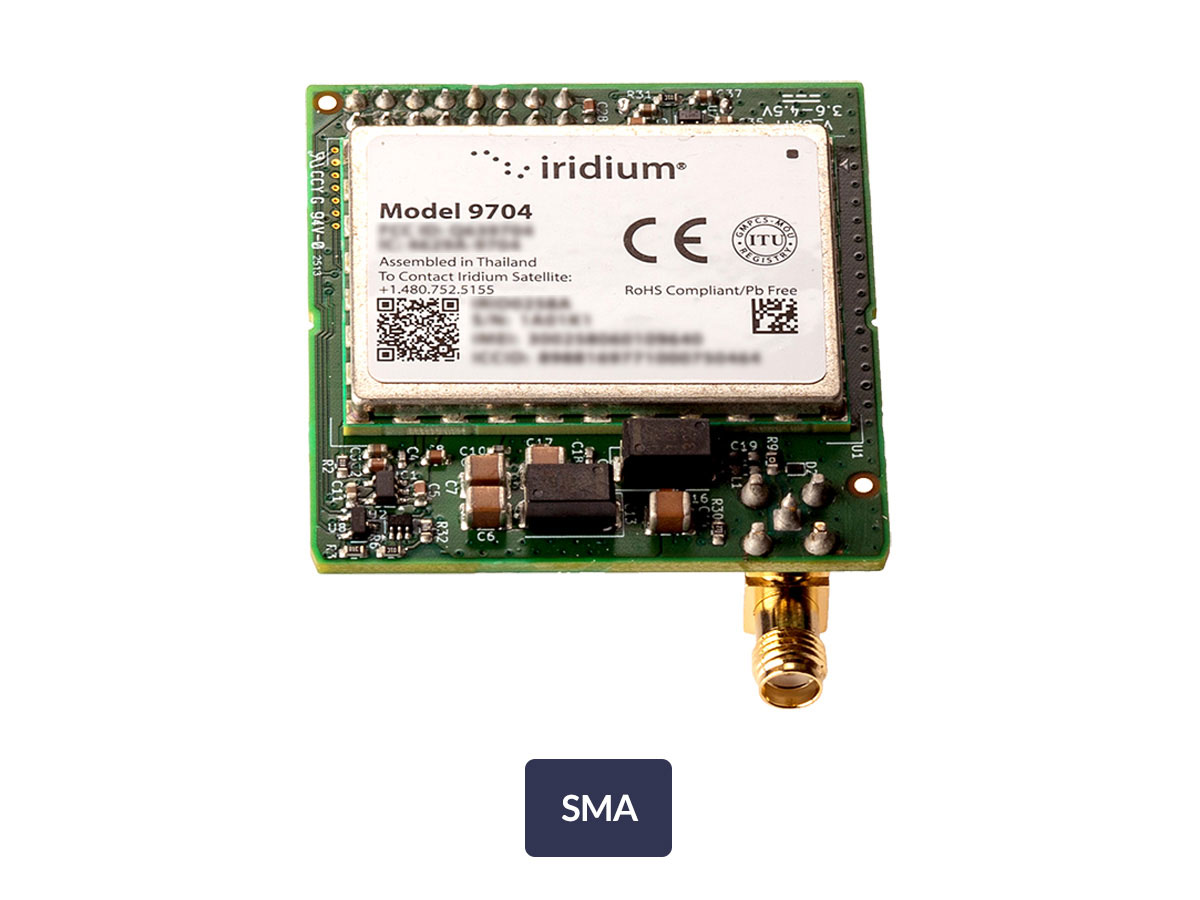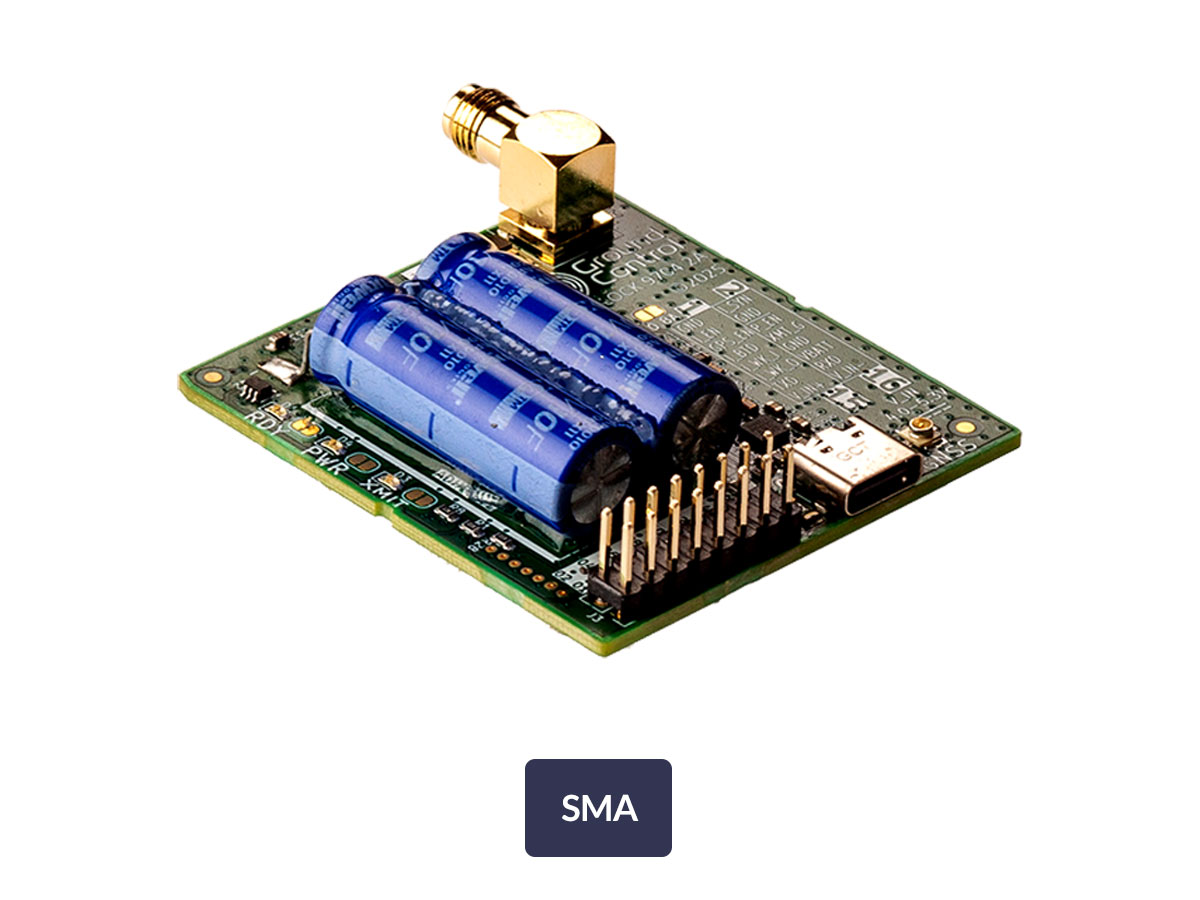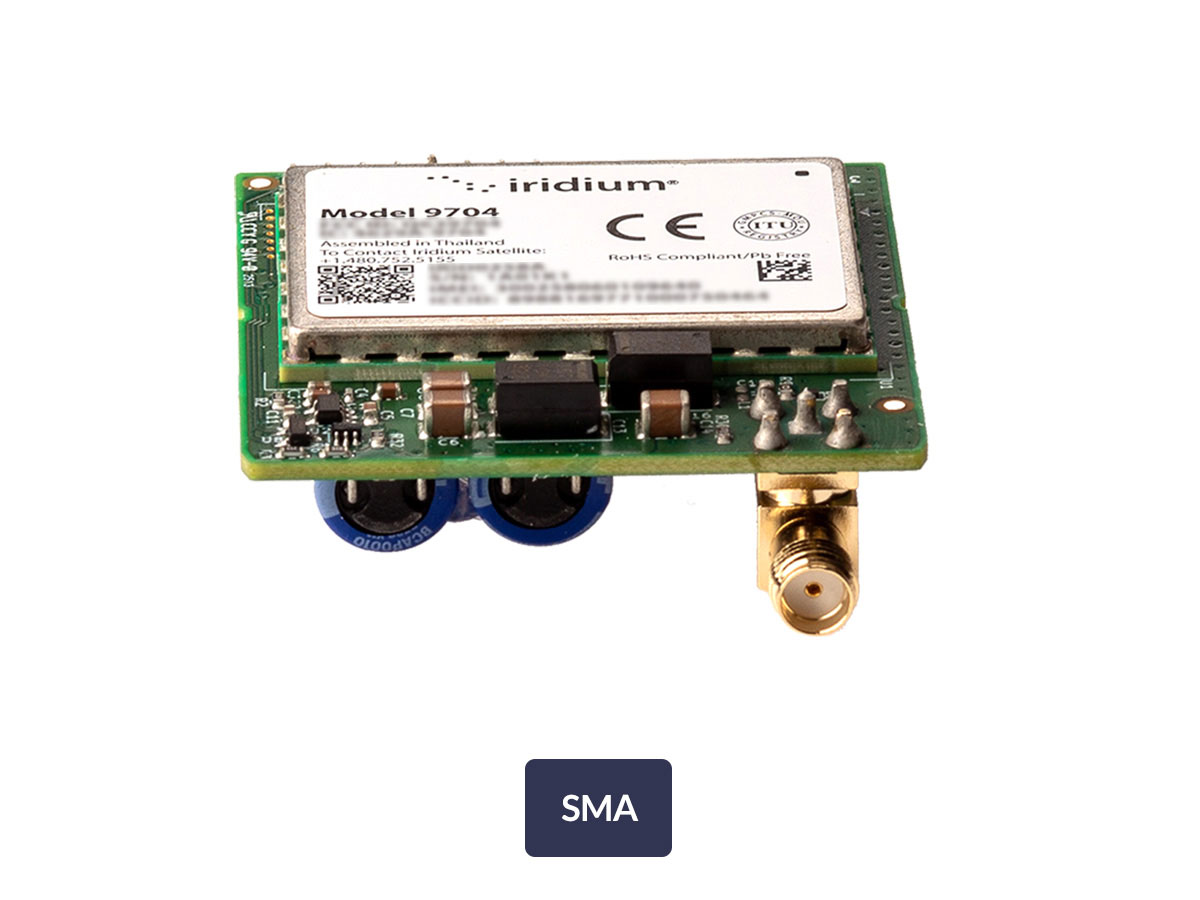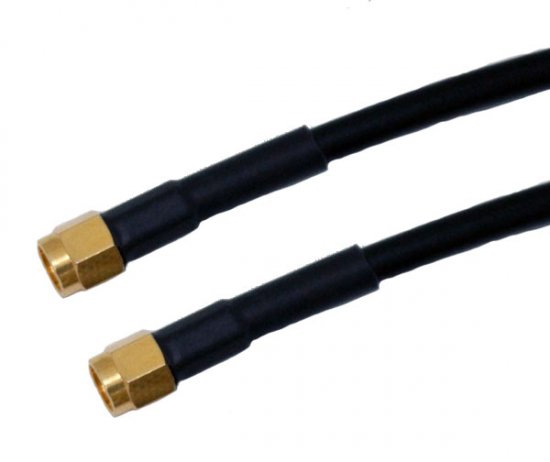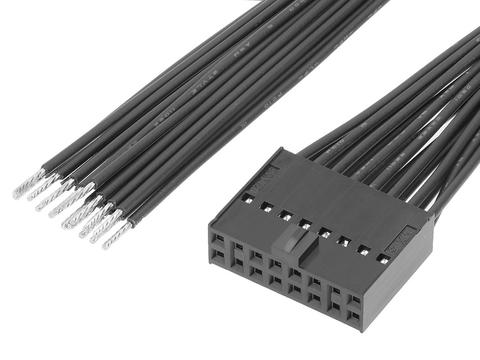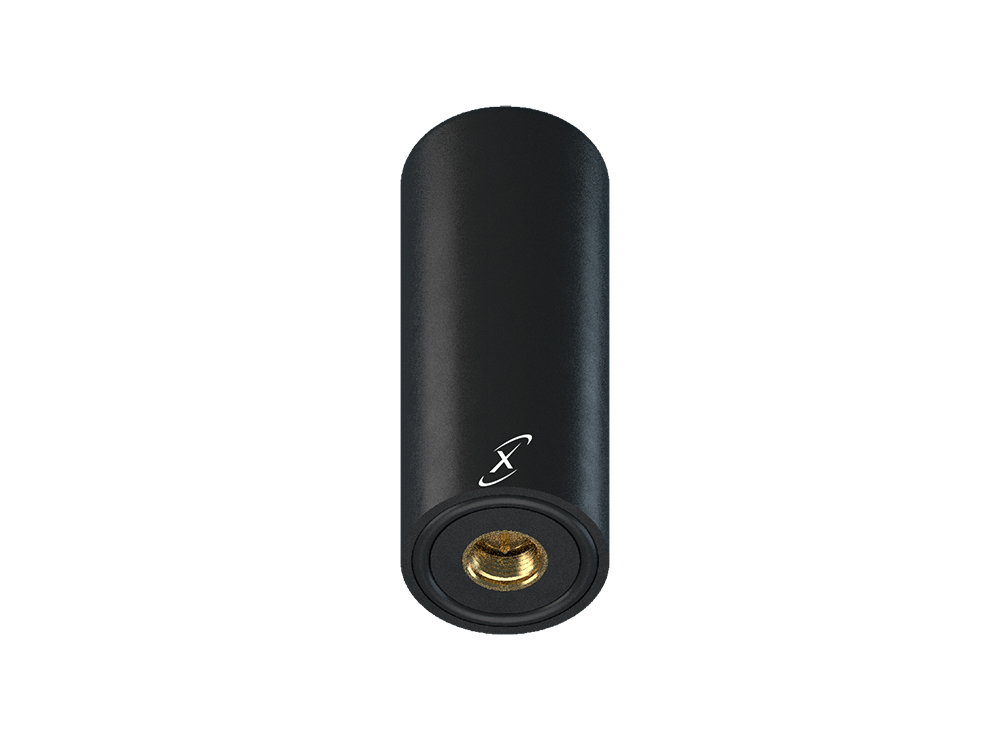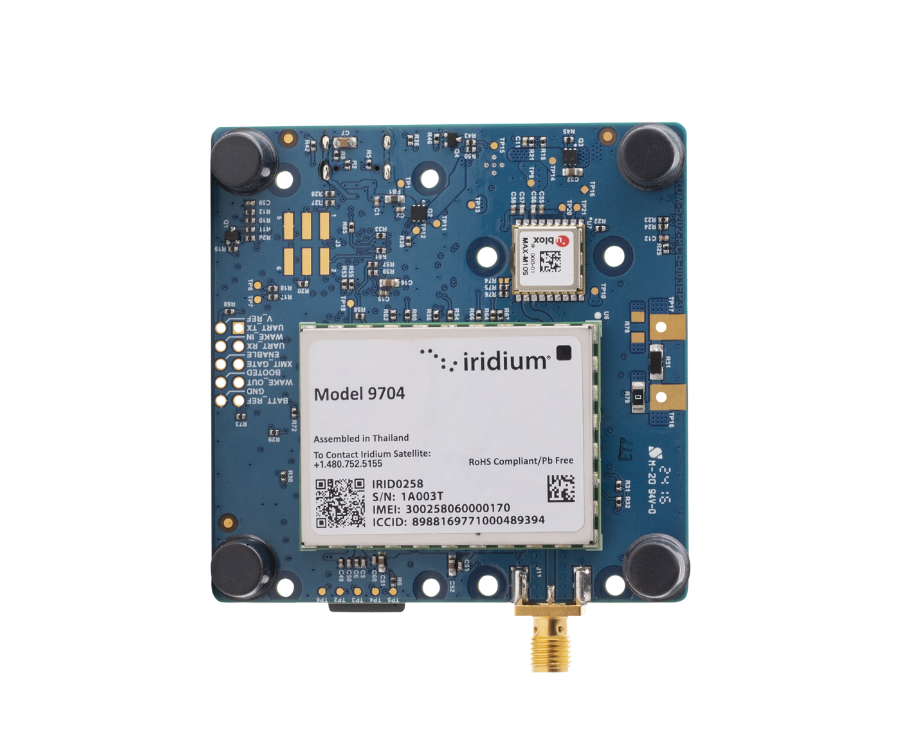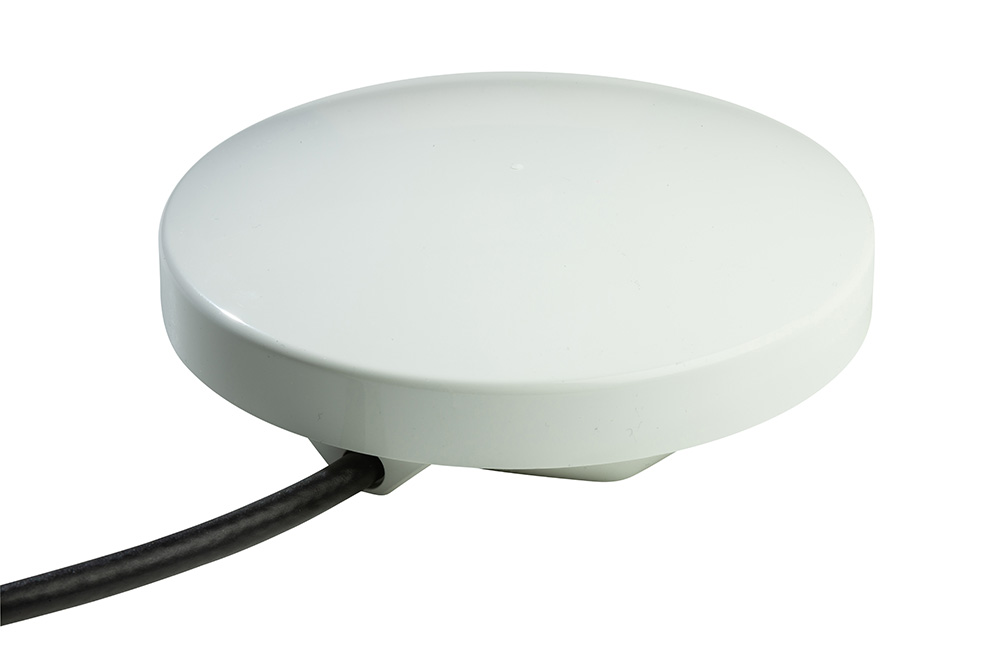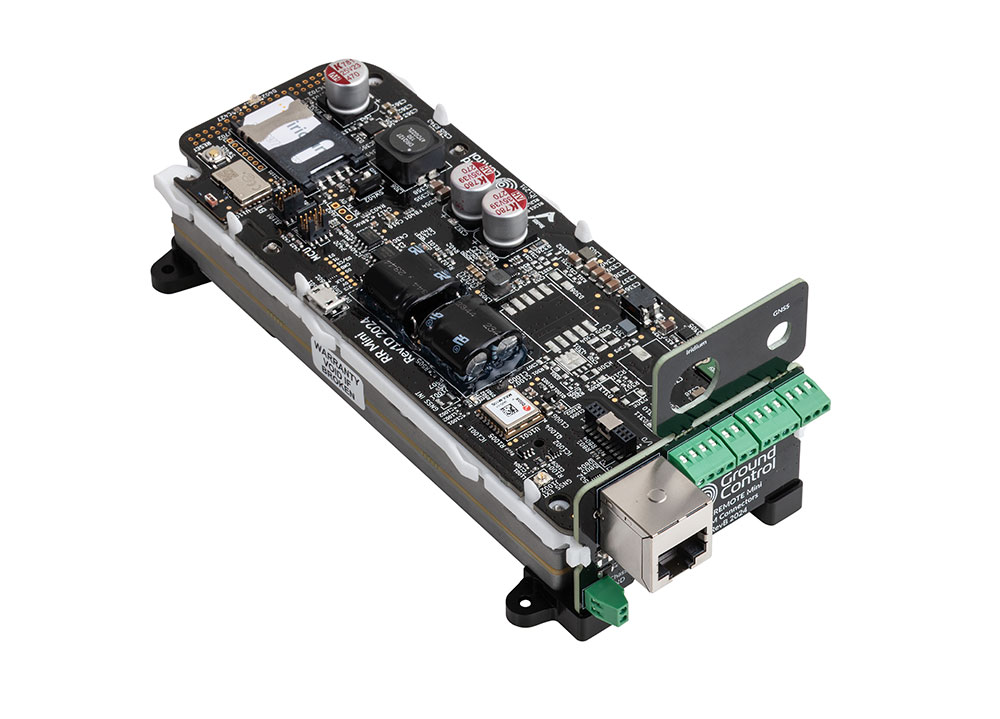RockBLOCK 9704 leverages the Iridium Certus 9704 satellite IoT module to deliver truly global bi-directional messaging from 25 bytes up to 100 KB, with typical end-to-cloud latency of < 10 s.
Hardware interfaces include a TTL 3.3 V UART, USB-C serial bridge, U.FL for GNSS passthrough, and SMA or integrated patch antenna options. It runs from 4.0-5.3 V DC (3.6-4.5 V battery), peaks at 1.4 W, idles at < 60 mW, and sleeps at < 5 mW – perfect for battery-sensitive deployments.
When you’re ready to move beyond prototypes, our open source C and Python SDKs handle JSPR command sequencing, session and power-mode management, fragmentation/reassembly, and flow control. Just install, configure your serial port, and call send()/receive().
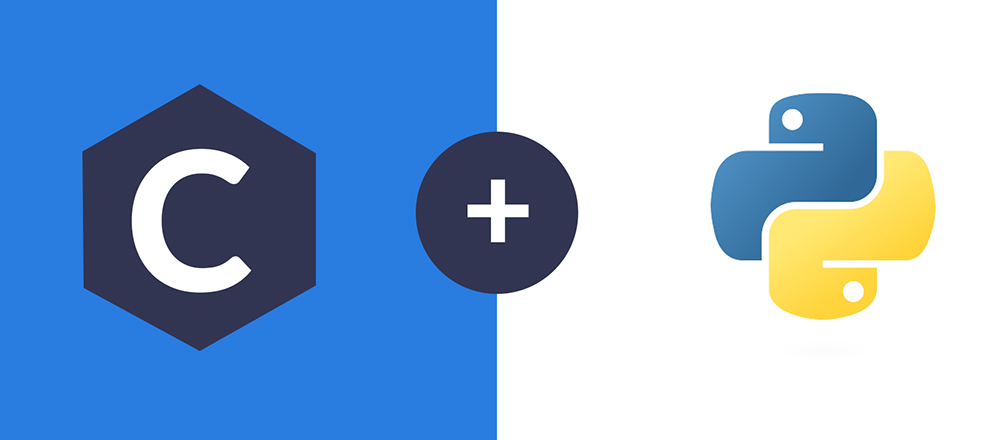
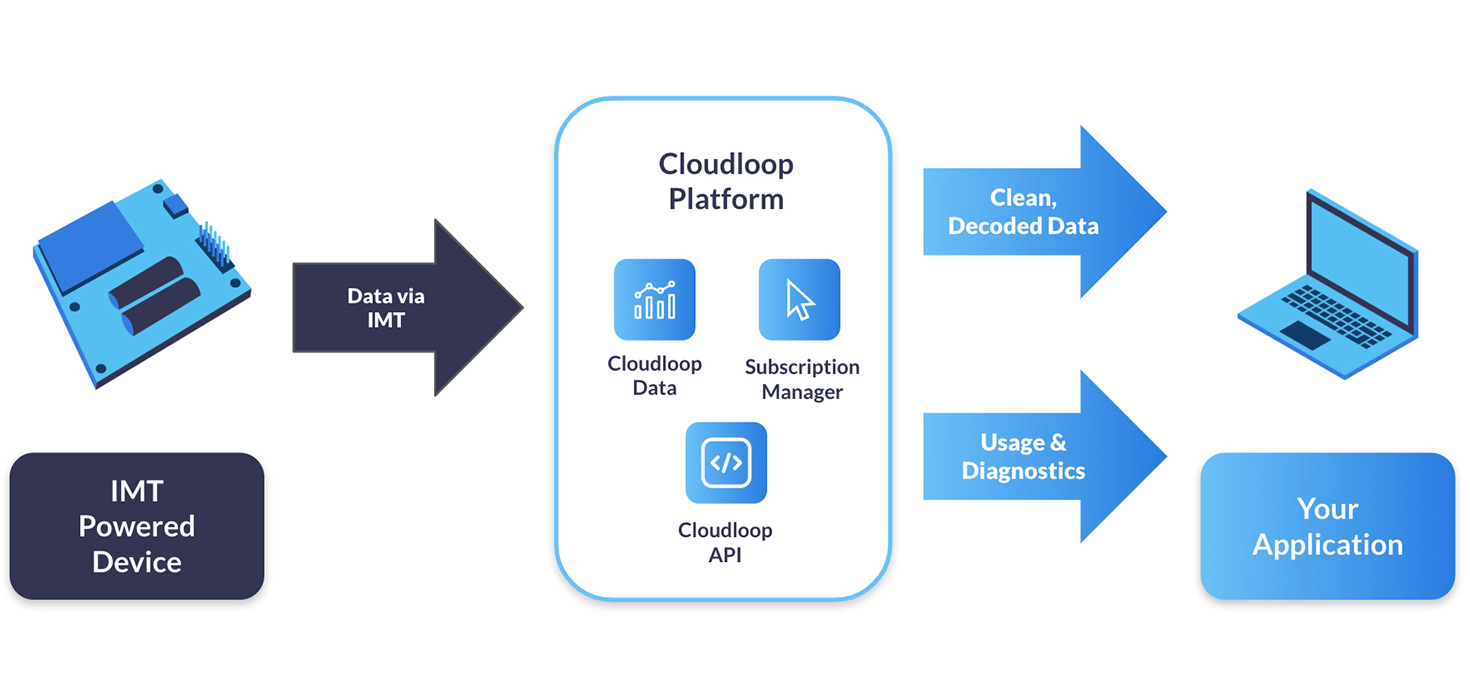
Once messages leave the device, Cloudloop Data seamlessly routes uplinks and downlinks to your HTTPS or MQTT endpoint, and exposes a REST API and dashboard for device metadata, transmission status, and message history.
With flexible, pay-per-message billing and real time usage dashboards, Ground Control delivers true full-stack support – from hardware and network transport through to data delivery – so you can prototype fast and scale instantly.
Important Note: Airtime for RockBLOCK 9704 must be purchased from Ground Control.
- Seamless integration with the Iridium 9704 module for fast prototyping and deployment
- Supports Iridium Messaging Transport (IMT) for faster throughput and larger messages (up to 100 KB)
- Compact, lightweight design ideal for space-constrained enclosures
- Simple 3.3V UART serial interface for easy communication
- Available with an embedded patch antenna or SMA connector for external antennas
- Fully compatible with the RockBLOCK ecosystem for a smooth development path
- Low latency, truly global connectivity, delivering messages anywhere on Earth in seconds
- Reliable two way messaging, even in remote and extreme environments
- Prepaid airtime with automatic suspension to prevent unexpected costs
- Extensive developer resources, including C & Python libraries, tutorials, and examples
- Cloudloop Data integration for effortless message handling and delivery to cloud services
- Designed for real-world deployment without the need for a hardware redesign
IMPORTANT: This is intended to provide early access information to interested parties during the development process. While we strive to maintain accuracy, any part of the specification or design of these products may change without notice.
Physical – Patch Antenna
- Dimensions: 72 (95) x 75 x 16.5 mm
- Weight: <50g (inc. patch antenna)
- Form Factor: PCB assembly with 4mm mounting holes
- Antenna: Integrated patch antenna
Physical – SMA
- Dimensions: 48 x 52 x 16 mm
- Weight: <35g (exc. antenna)
- Form Factor: PCB Assembly with notched edge for slot-mounting
- Approved antenna (combined Iridium & GNSS) required. Cable options from 0.2m to 2m
Environmental
- Operating temperature: -40C to +70C, <95% RH
- Vibration & Shock: SAE J 1455
- Ingress Rating: n/a
Cable Connections
- 16-pin 0.1″ pitch multi-strand
- USB-C
- U.FL for GNSS
- SMA for Iridium / GNSS
Electrical & Power
- Voltage: 4.0-5.3 V DC, 3.6-4.5 V Battery, 5 V USB-C
- Power consumption (max): 1.4 W
- Power consumption (min): < 5 mW (sleep mode)
- Power consumption (idle): < 60 mW (registered with network, listening, ready to transmit/receive)
Communication Interfaces
- Iridium Messaging Transport: 4.8kbps bi-directional messages from 10 to 100,000 bytes. Latency typically < 10s between remote and cloud applications
- GNSS: U.FL connector available for separate GNSS Passthrough
- Serial: TTL UART connection (default: 230400baud)
- USB-C: USB-Serial bridge (default: 230400baud)
- Digital GPIO: 5x inputs, 3x outputs. Connection via 16 way cable assembly
Developer & Platform Support
- C & Python libraries, tutorials, and example code
- Cloudloop integration for message handling and cloud service delivery
- Prepaid airtime with automatic suspension for cost control
There are both pre-pay and contract options for RockBLOCK 9704 airtime. Prepay airtime is ideal for pilots and early-stage developments, whereas contract-based airtime is for long-term deployments with steady use. Prepaid airtime can be purchased via Cloudloop.
The below pricing is representative of contract-based pricing. The minimum contract term is 3 months, during which you’ll incur a fee if you terminate the service (this is dictated by the network).
RockBLOCK 9704 is tightly integrated with Cloudloop, our IoT platform that lets you activate plans, suspend services, and adjust billing preferences. You can set alerts for high usage, review invoices, and pool data allowances across multiple devices where supported.
On receipt of your Rock device, you’ll be prompted to register it on Cloudloop using a unique registration code. You can then add airtime.
First time users should head to join.cloudloop.com to get started.
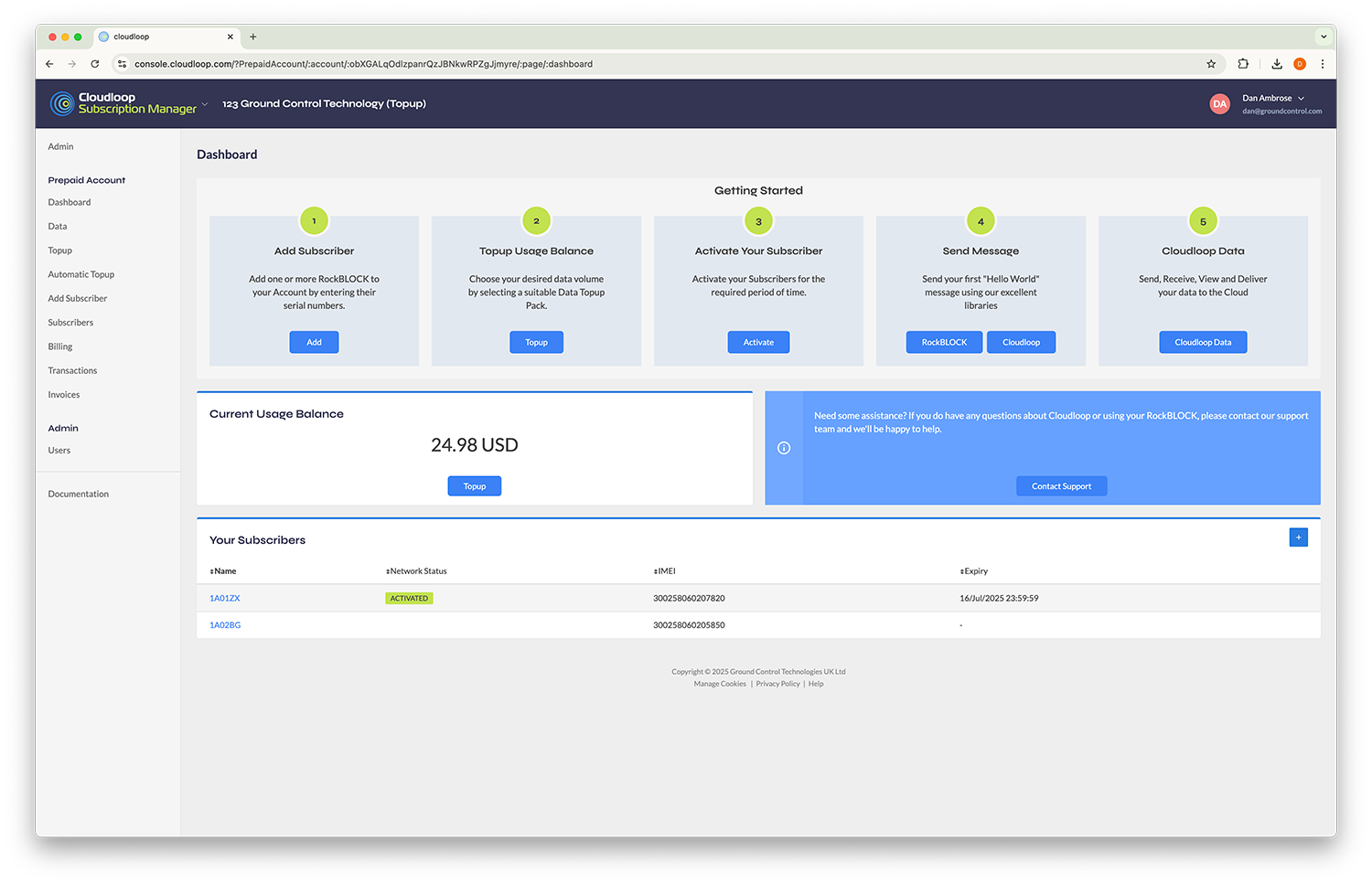
FAQs About RockBLOCK 9704
No, the 9704 uses a proprietary protocol which Iridium call JSPR (JSON-Based Serial Protocol for REST). It’s a little more complicated than an AT style interface, and requires you to exchange JSON documents with the module. Due to the limited on-board memory, when sending large messages, there are some quite strict timing rules too.
All of this complexity is handled elegantly by our open-source C library, so in practice we don’t expect people to implement the JSPR protocol themselves, and will instead use our library in their projects.
That said, the RockBLOCK Pro and Pro OEM devices expose an AT command interface that is largely compatible with the 9602/9603 modem command set, though there are some differences and extensions specific to these products.
Yes. Cloudloop Data includes a “legacy RockBLOCK HTTP Post” option, so your existing integrations should continue to work without changes. That said, Cloudloop also supports a wide range of modern destination types – ideal if you’re using services like AWS, Google Cloud, or Azure – so it’s worth exploring those for even more flexibility.
Yes, it’s TTL level UART at the 16-pin header.
Yes, we offer a plastic mounting enclosure as an accessory for the SMA version. This enclosure is designed to securely hold the PCB in place, with integrated features such as screw holes for easy mounting, so you won’t need to develop a custom solution unless you prefer to.
No, the RockBLOCK 9704 does not integrate with the existing RockBLOCK admin dashboard. Instead, it’s managed through Cloudloop – our modern platform that provides all the same functionality and more.
You’ll still be able to activate units, manage delivery groups, and send mobile-terminated (MT) messages manually via the user interface. Cloudloop supports these features across all devices and transport types, offering a more flexible and scalable approach to device management.
Iridium Certus 9704 Hardware Comparison
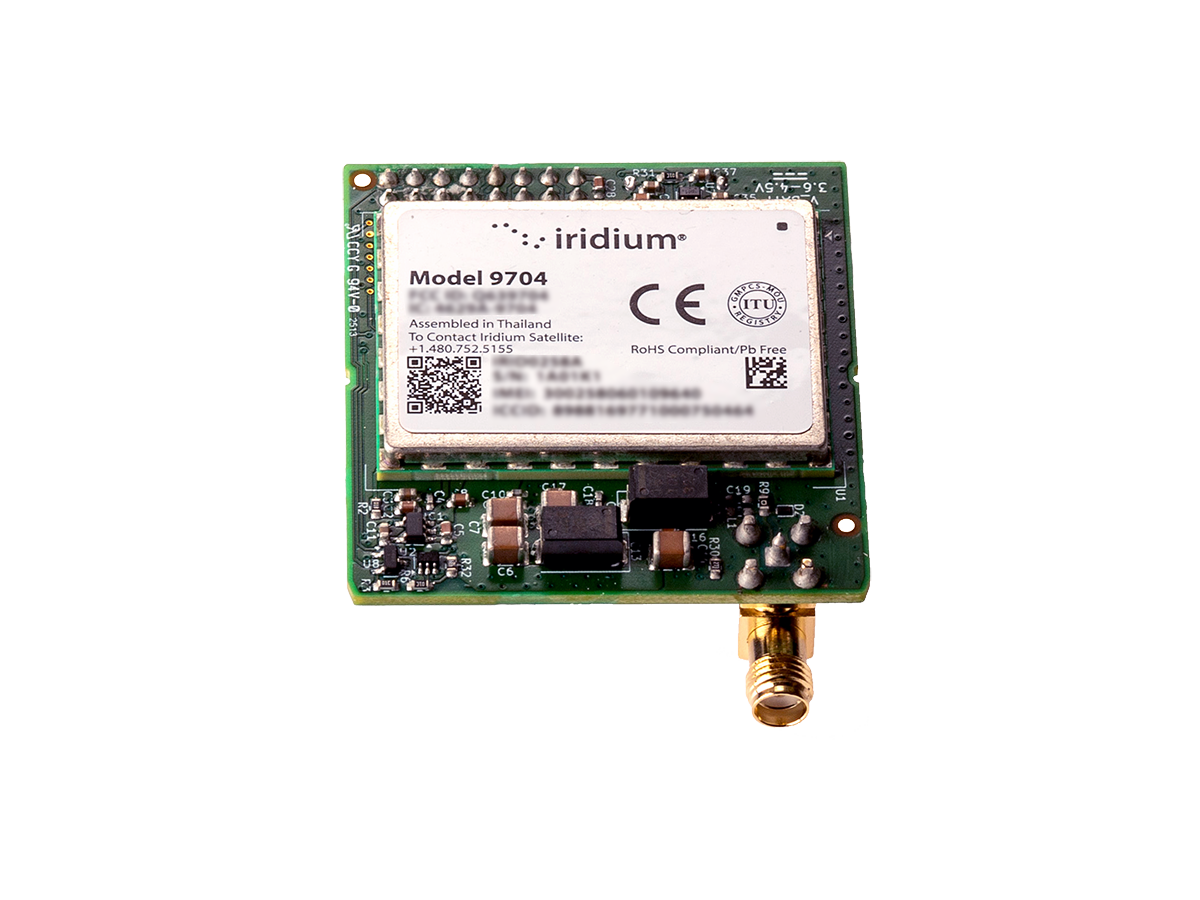
RockBLOCK 9704 SMA |
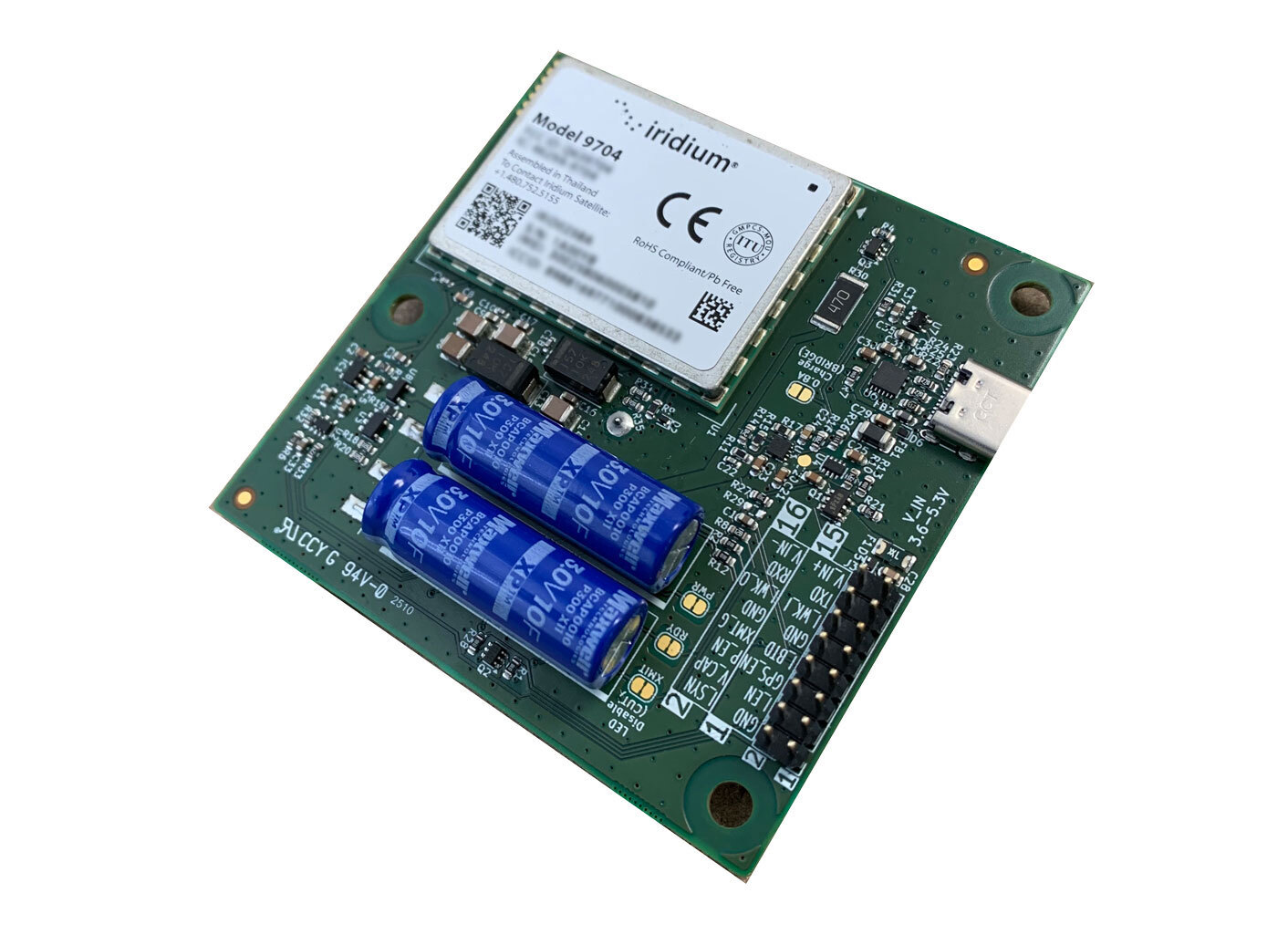
RockBLOCK 9704 Patch |
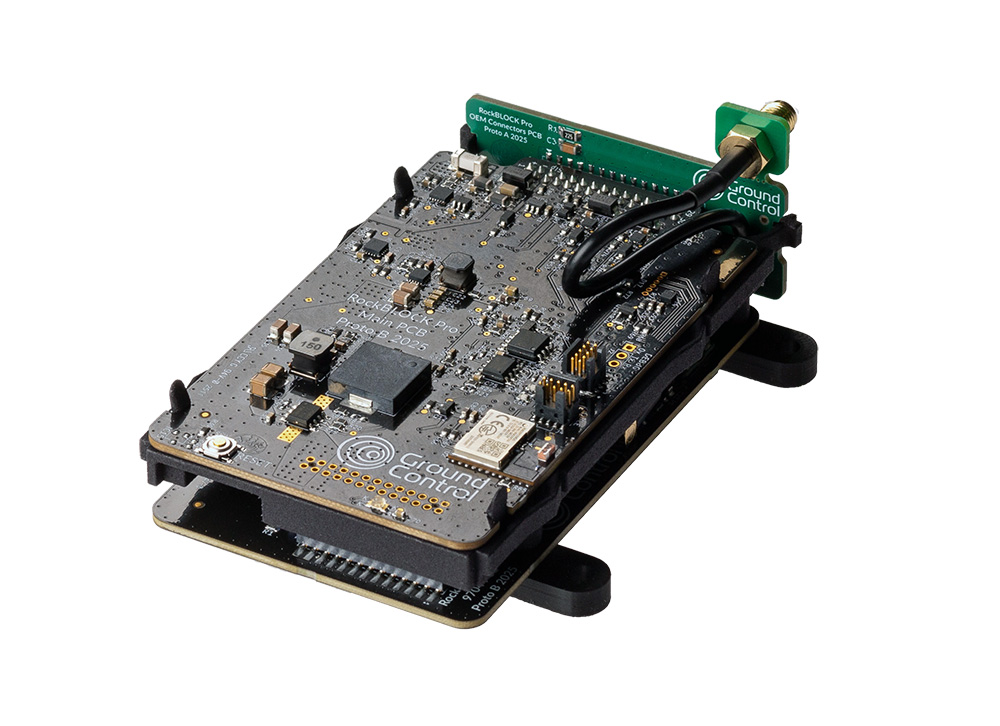
RockBLOCK Pro OEM |
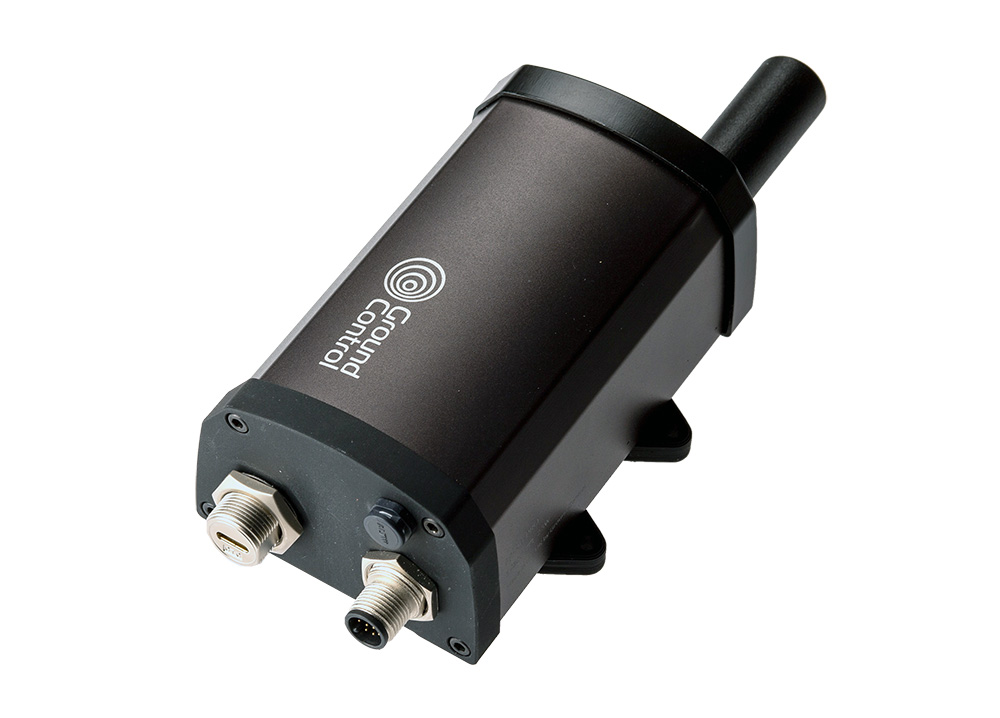
RockBLOCK Pro |
|
|
Form Factor |
PCB assembly with notched edge for slot-mounting |
PCB assembly with 4 mm mounting holes |
PCB assembly with mounting frame |
Aluminium enclosure |
|
Dimensions |
48 × 52 × 16 mm |
72 × 72 × 16.5 mm |
104 x 65 x 29 mm |
121 x 75 x 57 mm |
|
Weight |
< 35 g (excl. antenna) |
< 50 g (incl. patch antenna) |
108 g (excl. antenna) |
400 g (incl. antenna) |
|
Environmental |
None |
None |
None |
IP66 |
|
Power |
4.0–5.3 V DC; 3.6–4.5 V battery; 5 V USB-C |
4.0–5.3 V DC; 3.6–4.5 V battery; 5 V USB-C |
5–30 V DC, 5 V USB-C |
5–30 V DC, 5 V USB-C |
|
Antenna |
SMA connector for Iridium/GNSS + U.FL for GNSS passthrough |
Integrated patch antenna |
SMA connector; approved combined Iridium + GNSS antenna required |
Optional built-in antenna; or use SMA connector |
|
Protocol |
IMT only |
IMT only |
IMT + 9603 AT commands |
IMT + 9603 AT commands |
|
Message Handling |
|
|
|
|
|
GNSS |
External GNSS via U.FL passthrough |
External GNSS via U.FL passthrough |
Concurrent reception of 4 GNSS |
Concurrent reception of 4 GNSS |
|
I/O Options |
5 × inputs & 3 × outputs via 16-way cable assembly |
5 × inputs & 3 × outputs via 16-way cable assembly |
2 × inputs & 2 × outputs via 30-way header |
4 × configurable channels (0–10 V analog input / open-drain digital output / dry-contact input) |
RockBLOCK 9704 Accessories
Kickstart Your Remote IoT Application
RockBLOCK 9704 is available to order online today for fast dispatch, or get in touch with our expert team if you have any questions. Whether you need technical guidance, help choosing the right version, or want to discuss volume orders, we’re here to help.
Fill in the form or email hello@groundcontrol.com, and we’ll reply within one working day; or choose between the patch / SMA version to place your order online.

